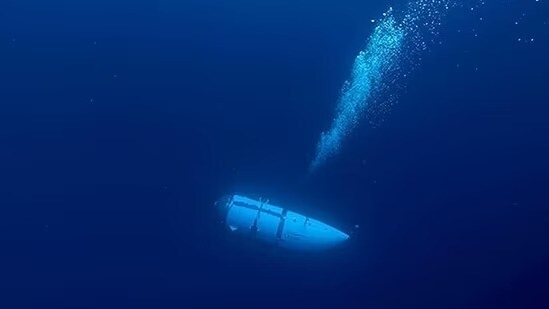'Had to ration everything,': Survivor of submersible which sank in 1973 recalls 3-day ordeal
Roger Chapman, then 28, and Roger Mallinson, then 35, were rescued in the world's deepest underwater rescue in 1973 September, as per Guinness World Records.
Fifty years ago, just as the Titan submersible — which was on an expedition to the Titanic shipwreck site, almost 13,000 feet below the sea level — another submersible went missing for three days. In 1973, two British sailors got stuck in a submarine during a regular dive to lay transatlantic phone cables.

The duo sat trapped in a deep-sea submersible around 1,575 feet below the Atlantic Ocean. The two faced an uncertain fate as an international team was looking for a way to rescue them.
Roger Chapman, then 28, and Roger Mallinson, then 35, were rescued in the world's deepest underwater rescue in 1973 September, as per the Guinness World Records.
85-year-old Roger Mallinson in an interview, recently, spoke to Newsweek about the mental ordeal those on board went through.
Read Here | ‘Sounded bad on its face’: James Cameron points out flaws in Titan submersible’s design
Mallinson, who currently lives in Troutbeck, England, spoke about the psychological toll such a situation taken on a person. He said, “They will have absolutely not one atom of hope.”
Mallinson and Chapman were running extremely low on oxygen when they were found. They had only had a can of lemonade and a cheese sandwich during the three days.
Mallinson told SkyNews, “It took 84 hours to rescue us… We didn't have enough food. We didn't have enough oxygen. We just had to really be rationing everything and look after each other.”
Recently, speaking about the urgency of rescue missions in such cases, Mallinson told The New York Times, “If you need rescuing, you need rescuing now. Not in another three days.”
What happened on the submersible in 1973?
The duo were laying a transatlantic telephone cable around 240 kilometers off the Cork coast in Ireland on August 29, 1973. During the task, water began to flood a section of their vessel, the Pisces III, which was around six feet in diameter. It then sunk to about 1,575 feet.
Read Here: Cause of Titan's implosion? Unknown. Who will lead the investigation? Uncertain
Speaking to BBC in 2013, Mallinson had said that the two had “got cushions and curled ourselves up to try and prevent injuries”. “We managed to find some white cloth to put in our mouths so we didn’t bite our tongues off too. It was about 30 seconds until we hit.”
Once the vessel reached the sea floor, the duo could just do their best to conserve oxygen. However, they did manage to maintain communication. Since, the submersible was too deep for divers, so the rescuers began searching. Two similar submersibles — Pisces II and V — were also taken to the scene.
Rescuers attached cables to stranded Pisces III. The rescuers then hoisted the vessel until it broke the water surface.
The two had to wait for over 30 minutes as rescuers tried to break in. They were stranded in the capsule for over 84 hours and around 12 more minutes of oxygen was left in the submersible when they were rescued on September 1.
All aboard Titan Submersible died
Titan Submarine, which went missing within a couple hours of its dive off the Canada coast last Sunday, imploded, the United States Coast Guard confirmed.
All five crew members were found dead, leaving the exploration community and their grieving families in deep sorrow.
Watch: Chilling viral video shows moment Titan submersible began its doomed voyage
Rescue crews discovered a debris field near the Titanic, approximately 1,600 feet from the ship's bow, according to the Coast Guard. Among the recovered pieces were the Titan's landing frame and rear cover. The debris was located after the submersible was expected to have depleted its oxygen supply.
OceanGate, known for providing tours of the Titanic wreck, has been offering a high-risk travel experience since 2021, attracting enthusiasts willing to pay up to $250,000 per person. The tragic events surrounding the Titan underscore the inherent risks involved in such ventures.






